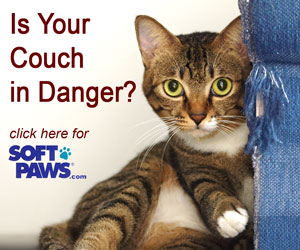Why Are There Fewer Big Differences in Cat Breeds Than in Dog Breeds?

Have you ever wondered why there such is a huge variation in body size and shape in dog breeds (just compare a Chihuahua to an Irish wolfhound), but cat breeds don't have this major variety? After all, both species were influenced through intentional breeding done by humans.
What Is Selective Breeding?
When people breed two animals together with the express intent of enhancing a specific characteristic, either a personality or physical trait, it is selective breeding.
Genetic mutations happen naturally in the course of a species' existence, and some of them are helpful to survival and take root and change a species slowly over time while others don't. However, when intentional selective breeding takes place, changes can be made in a species much more quickly, and they may not necessarily be helpful for natural survival.
Humans use selective breeding in animal populations to enhance specific animal characteristics that are helpful to us. For example, in dairy cattle, selective breeding helps increase a herd's milk production.
Why Did Selective Breeding Produce Such Different Results in Dogs and Cats?
Humans have lived alongside both dogs and cats for many generations and have engaged in selective breeding of both species, but these activities have achieved very different results because of what our goals were.
The likely reason that our efforts resulted in much more physical variety in dog breeds than in cat breeds is because of the vast number of different ways dogs can do work for humans. They can pull sleds, guard things and people, move items around, hunt or aid in hunting many animals ranging from burrowing ones to big, lumbering land animals. Each of these jobs requires very different body structures and personalities.
In contrast, cats have mainly served two purposes for humans throughout time: rodent hunting to keep food supplies safe and to reduce the diseases they carry (although humans didn't realize for a long time that cats reduced the spread of diseases by keeping mouse and rat numbers down) and companionship.
To hunt rodents and provide companionship, the basic body structure of cats didn't need to change much. The changes that intentional selective breeding introduced into cat breeds mainly relate to cosmetic and personality traits like hair length and easy-going natures.
Illnesses Enhanced by Selective Breeding
Sometimes a trait that humans are trying to enhance in a dog or cat resides on the same gene as a mutation that can create illness. When that happens, the result is that certain breeds are prone to developing that illness.
An example of this is seen in Scottish fold cats. The gene that allows the ear tips to fold over can also produce cartilage problems in the rest of the body. The result is a painful condition called osteochondrodystrophy.
Human-Created Conditions in Dogs and Cats
Sometimes it isn't a genetic condition that is created by selective breeding but a problem caused by the extreme physical characteristics that are bred for.
One example of this is the breathing and respiratory problems common in extremely flat-faced cats like some Persians and exotic shorthairs.
You May Also Like These Articles:
Exotic Shorthair Cats: An Interview with Fancy Cat
Scottish Fold Cats: An Interview with Fancy Cat
Persian Cats: An Interview with Fancy Cat
Siamese Cats: An Interview with Fancy Cat
Top 10 Most Popular Cat Breeds - Slideshow
Best Breeds for Multi-Cat Households
Notice: Ask-a-Vet is an affiliated service for those who wish to speak with a veterinary professional about their pet's specific condition. Initially, a bot will ask questions to determine the general nature of your concern. Then, you will be transferred to a human. There is a charge for the service if you choose to connect to a veterinarian. Ask-a-Vet is not manned by the staff or owners of CatHealth.com, and the advice given should not delay or replace a visit to your veterinarian.




